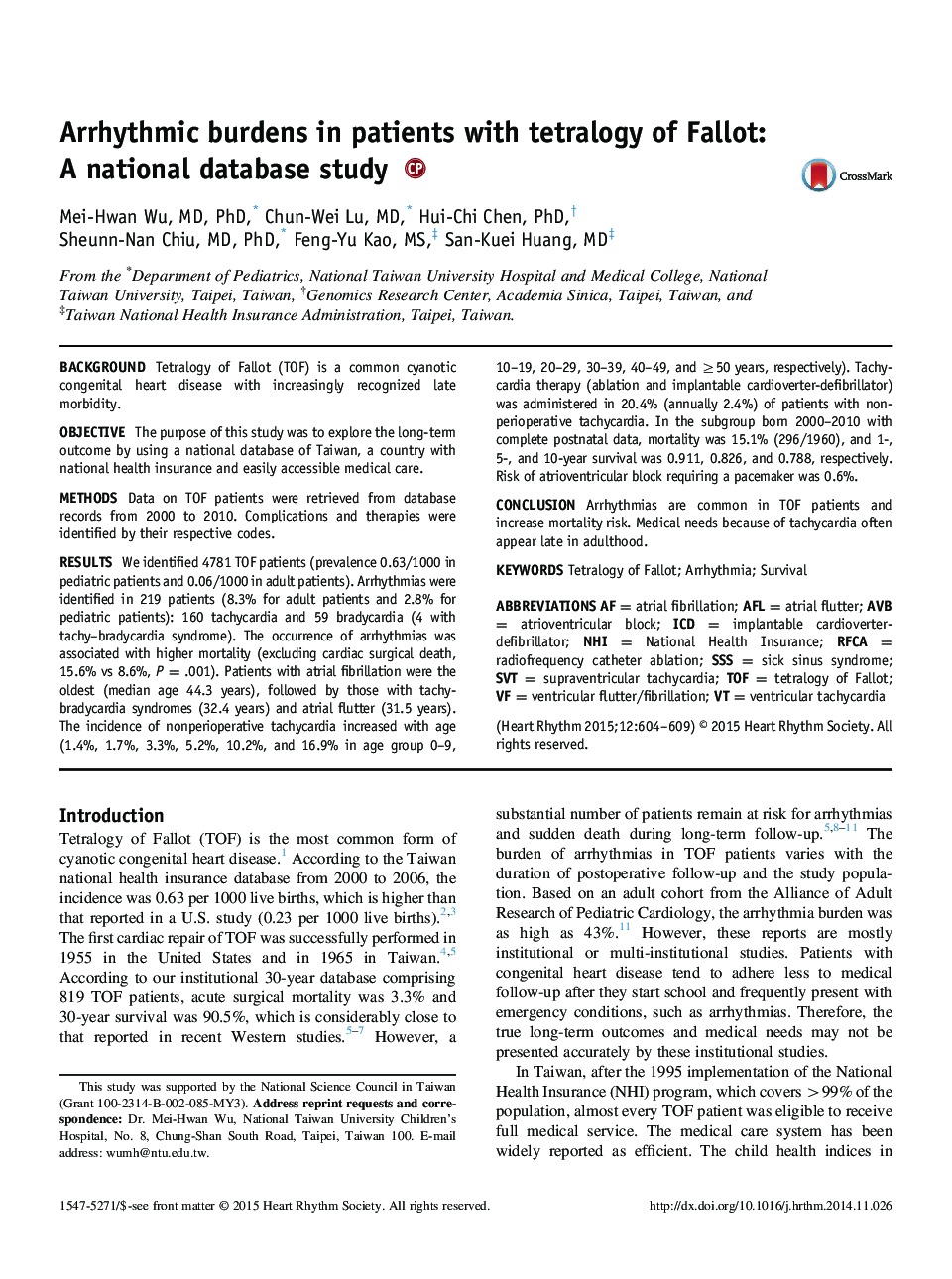| Article ID | Journal | Published Year | Pages | File Type |
|---|---|---|---|---|
| 2921887 | Heart Rhythm | 2015 | 6 Pages |
BackgroundTetralogy of Fallot (TOF) is a common cyanotic congenital heart disease with increasingly recognized late morbidity.ObjectiveThe purpose of this study was to explore the long-term outcome by using a national database of Taiwan, a country with national health insurance and easily accessible medical care.MethodsData on TOF patients were retrieved from database records from 2000 to 2010. Complications and therapies were identified by their respective codes.ResultsWe identified 4781 TOF patients (prevalence 0.63/1000 in pediatric patients and 0.06/1000 in adult patients). Arrhythmias were identified in 219 patients (8.3% for adult patients and 2.8% for pediatric patients): 160 tachycardia and 59 bradycardia (4 with tachy–bradycardia syndrome). The occurrence of arrhythmias was associated with higher mortality (excluding cardiac surgical death, 15.6% vs 8.6%, P = .001). Patients with atrial fibrillation were the oldest (median age 44.3 years), followed by those with tachy-bradycardia syndromes (32.4 years) and atrial flutter (31.5 years). The incidence of nonperioperative tachycardia increased with age (1.4%, 1.7%, 3.3%, 5.2%, 10.2%, and 16.9% in age group 0–9, 10–19, 20–29, 30–39, 40–49, and ≥50 years, respectively). Tachycardia therapy (ablation and implantable cardioverter-defibrillator) was administered in 20.4% (annually 2.4%) of patients with nonperioperative tachycardia. In the subgroup born 2000–2010 with complete postnatal data, mortality was 15.1% (296/1960), and 1-, 5-, and 10-year survival was 0.911, 0.826, and 0.788, respectively. Risk of atrioventricular block requiring a pacemaker was 0.6%.ConclusionArrhythmias are common in TOF patients and increase mortality risk. Medical needs because of tachycardia often appear late in adulthood.
